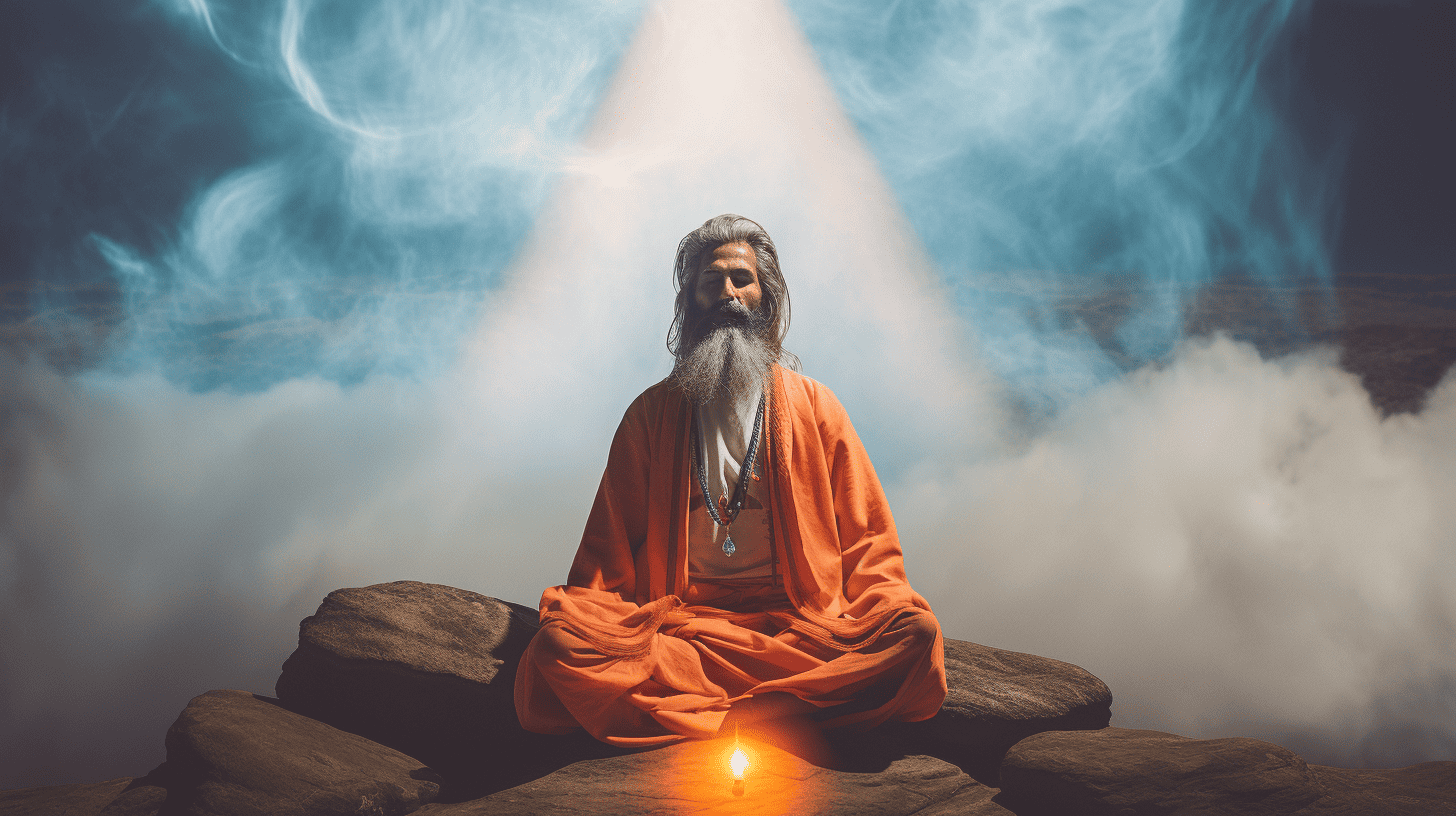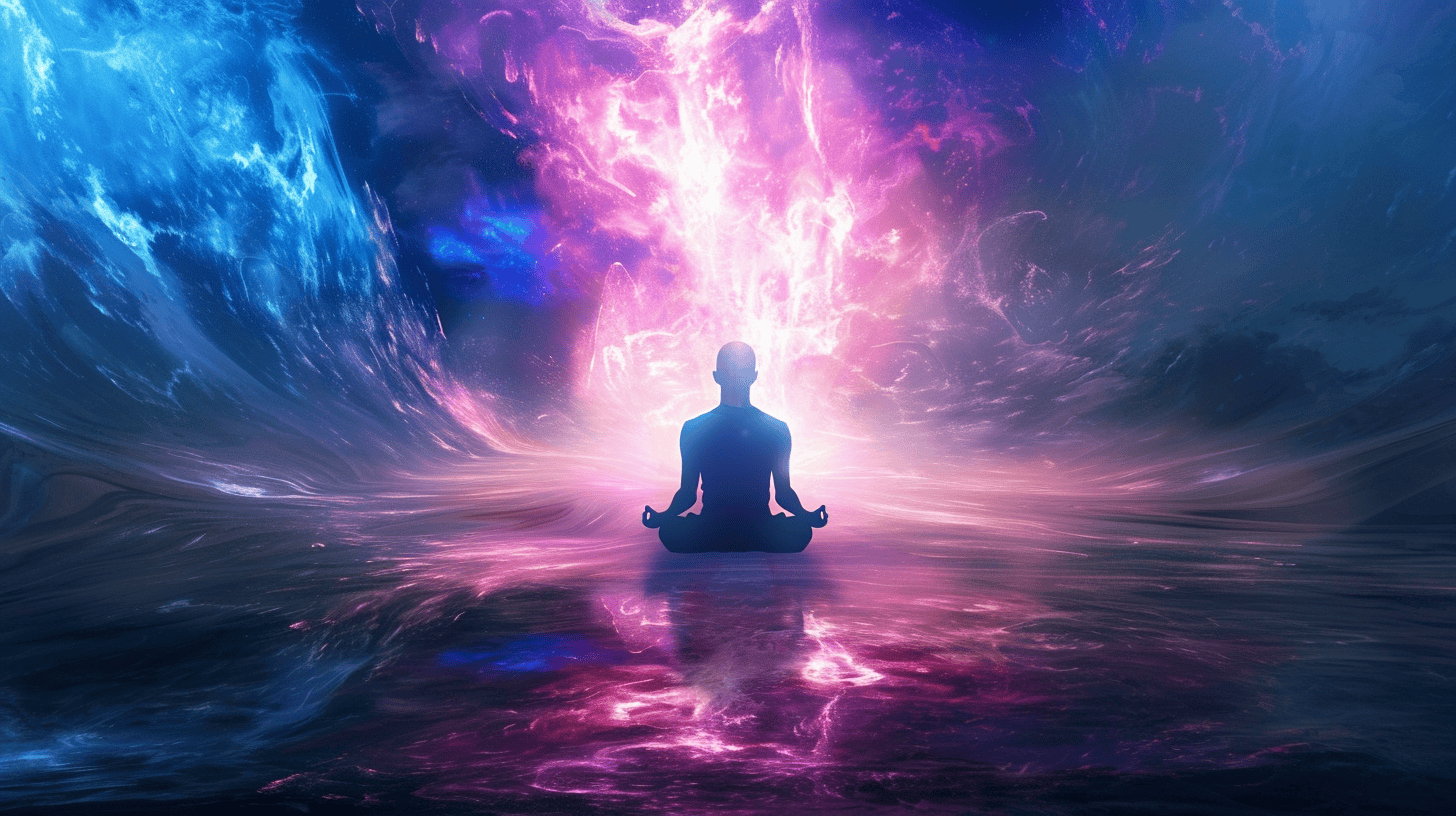A calm, open heart forms the foundation of health, happiness and inner peace. Yet the stresses of modern life often lead to closed-hearted living – anxiety, depression, resentment, judgment and isolation. With hearts armored against the pain of past wounds, we struggle to fully trust, forgive, love without condition or embrace all of life’s diversity with compassion.
Meditation for a Calm Heart provides a powerful antidote for healing emotional suffering at its root. Through practices that quiet the chatter of the busy mind and guide awareness inward, we reconnect with our core essence – an unconditionally loving, peaceful presence beyond passing thoughts and feelings.
Key Takeaways
- Heart-centered meditation helps heal emotional suffering by quieting the chatter of the busy mind
- Practices guide awareness from thinking to presence, reconnecting us to inner peace
- In this expanded state, the heart unclenches protective armor and opens to give/receive love
- We surrender judgment, align with life’s flow, gain stabilizing inner refuge
- Equanimity, self-responsibility and compassion naturally increase
- An open, calm heart provides clarity for skillful responses over reactions
- Awakening the spiritual heart center is a lifelong process of great reward
What is the Best Meditation for Reducing Stress and Promoting Heart Health
As someone interested in meditation, I have personally found kundalini yoga to be profoundly effective for relieving stress and anxiety while bringing more peace and calm to my heart and mind.
One kundalini meditation technique I practice daily is a breath-focused meditation called Long Deep Breathing. This smooth, conscious breathing pattern helps soothe the nervous system, condition the lungs, and open awareness to the rhythm of life within us.
From Kundalini Yoga Meditation: Meditation is a personal time to connect with yourself and your breath, helping to clear your mind and stay present. Kundalini Yoga Meditation
I like to sit in an easy, comfortable posture with a straight spine before beginning. Then I make gyan mudra by placing the tip of the index finger to tip of thumb, keeping the other three fingers straight. This subtle hand position connects meridians in the hand to establish balance in the mind.
Next I focus on my breath, inhaling slowly and deeply through both nostrils for a count of 11 seconds. After filling the lungs completely, I exhale smoothly for 11 seconds as well. There is no straining, just a conscious effort to breathe slowly, smoothly, and deeply.
I continue this pattern for 11 minutes, finding a natural rhythm between the inhalation and exhalation. Sometimes, I also chant along with each breath, thinking “Sat” on the inhale and “Nam” on the exhale. This further anchors my awareness.
After practice, I feel profoundly calm, clear and centered. My heart and lungs feel more open and conditioned. Stress has melted away. I can meet challenges from a more balanced, peaceful state of mind. This sets the tone for my whole day.
Tip: You can start with 3 minutes of conscious long deep breathing and gradually build up your practice time from there
What are the Optimal Conditions for Heart-Centered Meditation?
Through personal practice and study, I have found there are certain optimal conditions that allow us to go deeper in heart-centered meditation and receive more profound benefits:
Appropriate Posture & Environment
- Sit with a straight spine to keep energy channels open
- Neutral, comfortable position that can be held without strain
- Quiet, tranquil environment free from distractions
- Natural settings outdoors can also promote a meditative state
Regular Practice
- Ideally 20-30 minutes daily
- Morning is great to set intention for the day
- Evening allows integration of the day’s events
Open, Allowing Attitude
- Patience with the practice and wherever you are
- Non-striving, not needing to “accomplish” anything
- Letting go of expectations
- Being with each moment just as it is
Focusing Inward
- Observing the breath, becoming the witness
- Turning attention from outside world to inner landscape
- Reconnecting to the wisdom and guidance within
By integrating these elements, we create the necessary conditions for going deeper into states of calmness, joy and self-awareness – resulting in profound spiritual healing for body, mind and soul.
Tip: Start where you are – even 5 minutes of practice with patience and non-striving can open your meditation practice beautifully.
A Soothing Kundalini Meditation for the Heart
One of my favorite soothing meditations comes from my kundalini yoga practice. It’s a Pranayam called Left-Nostril Breath and it has wonderful effects on the heart and mind.
To start, I sit comfortably with a straight spine. I relax my body without slumping. Then I make gyan mudra again by bringing index finger and thumb together while keeping the other three fingers straight and relaxed.
I purse my lips slightly, close off the right nostril with my right thumb, focusing on long, deep breathing through the left nostril only. I inhale for a count of 4 seconds, then suspend the breath inside for a count of 16 seconds. Finally I exhale smoothly for a count of 8 seconds.
This breathing pattern continues for 3 minutes before I release the right nostril and relax. I notice beautiful heart-opening effects afterwards – my emotional energy feels balanced and my mind clear. Stress melts away and my energy lifts. I feel connected to my true nature inside.
I return to this pranayam whenever I need to reconnect to inner stillness. It aligns my body, breath, and mind to elevate my vibration. Over time, it accumulates to create better mental clarity, intuitive wisdom and compassion.
Try for yourself! Start slowly and build up to 3 minutes of practice over time. This is deeply healing for body, mind and soul.
Meditation Techniques To Calm the Heart Before Challenging Situations
In times of difficulty – whether upset at work, conflict in a personal relationship, or anxiety around an event – reconnecting to the heart allows us to gain perspective and respond consciously.
I have found taking even 1-3 minutes to meditate before reacting often shifts my state completely. Here are techniques to calm the heart when faced with challenges:
Long Deep Breathing: As described above, long deep breathing massages the heart while inducing deep calmness quickly.
Toning AUM: Chanting “AUM” on the exhalation channels energy to the heart center while aligning body and mind to highest consciousness
Listening to my Heartbeat: Sitting with eyes closed and hand on my heart, listening intently to the pulse while breathing slowly calms my entire being.
Expanding Heart Visualization: Imagining my heart center blooming like a rose or expanding infinitely outward reminds me of my true loving Self.
When faced with anything upsetting or triggering, I now first pause to tune inward with breath, chanting or visualization. This prevents reactive statements or actions I later regret.
Instead, insight arises – I understand my own and others’ positions better. Creative solutions come. Communication improves. Most problems smooth over without escalating.
Tip: Make meditation your first response to stressors. Pausing for self-awareness makes all the difference.

Establishing a Heart-Centered Meditation Practice
If heart-centered meditation interests you, how can you get started? Here is the approach I suggest for establishing an uplifting practice:
1. Set Your Intention
Clarify your motivation – why a meditation practice calls you. What benefits would you like to receive? Setting a clear intent provides momentum.
2. Start Small
5-10 minutes per day is plentiful for beginners. Sit quietly, focus on your breath, try a chant. Simple practices cultivate presence.
3. Set the Stage
Meditate in a quiet, sacred space if possible. Remove distractions. Use a candle, incense, sacred images/altar to set mood. Wear comfy clothes. Schedule meditations to prevent excuses.
4. Try Guided Meditations
Follow along with recorded meditations from spiritual teachers. These provide structure while you learn technique.
5. Track Changes Over Time
Notice internal shifts – more calm, joy, self-awareness? This builds conviction in the practice.
6. Find an In-Person Teacher
Spiritual guidance helps when questions/challenges arise in practice. Find meditations that resonate.
7. Commit to Ongoing Growth
Like any skill, meditation improves with regular practice over lifetimes. Progress not perfection!
Choose to make meditation an act of self-love and know you are worthy of going within to reveal your inner light. Keep it simple. Sit, breathe, let go. The rest unfolds on its own through grace. Your inner wisdom has all the answers you seek.
My Journey Into Meditation & Finding Inner Peace
Like many in our modern world, I struggled for years with anxiety, panic attacks, and a sense of inner disconnection from my true self. Outwardly, I was high-functioning but internally felt stressed, compressed, and exhausted trying to hold everything together.
In my mid-30’s, painful life events triggered intense bouts of anxiety, depression and even longer panic attacks that wouldn’t abate on their own. I considered medication but felt uneasy about side effects and addiction potential.
Desperate for relief, I signed up for weekly yoga and meditation classes. Figuring out how to calm panic felt extremely urgent.
That first class left me in tears – I’d had a glimpse of possibilities for inner peace I’d never imagined for myself. The depths of tranquility, joy and self-knowledge that yoga & meditation practices revealed stunned me.
I dove fully into daily practice. Within 6 months, friends remarked how I seemed to “glow from within.” I noticed many positive changes too – no more anxiety/depression symptoms at all, greater equanimity through challenges, feeling deeply inspired and connected to Spirit. My relationships improved beautifully as I shifted from reactive to responsive communication. Outer circumstances no longer threw me off balance like before – I tapped into inner stillness instead.
When major life stressors occur now, I meet them with tools to descend rapidly into deep meditation. Emerging renewed, I handle difficulties from a state of grace instead of panic. Ongoing immersion in spiritual practice completely transformed my existence.
I share my story to offer hope – if I learned how to heal lifelong anxiety through yoga, breathwork and meditation, anyone can. You hold that power within. Though it takes dedication, results from daily practice prove so worth it.
Give yourself this gift of going within through quiet contemplation. Discover who you are beyond temporary thought-waves and emotions. Reveal the peace, wisdom and unconditional love at your core.
Through meditation, life becomes a wondrous journey instead of an anxious struggle. You reconnect to your inherent perfection. May you find the inner tranquility and outer harmony you deserve.
Tip: When faced with panic, take 5 deep breaths – this too shall pass. Go inward to ride out any storm.

Start Your Practice
I encourage you to start a meditation practice yourself if you don’t already have one! Here are a few quick tips:
Set an Intention
Spend a few moments to set a clear intention for your practice. What benefits are you most looking to receive?
Prepare Your Space
Set up your meditation space in advance with any items you like to support your practice – cushion, blanket, relaxing music, candle, incense etc.
Start Small
Especially in the beginning, 5-10 minutes per day is plenty! Observe your breath, try a simple mantra or visualization.
Let It Unfold
Don’t put pressure on yourself or add too much structure. Just sit, breathe consciously, let thoughts/feelings rise and fall. Naturally deep states of meditation start to emerge.
| Type of Meditation | Length of Practice | Benefits |
|---|---|---|
| Breath Awareness | 5 minutes | Relieves stress, quiets “monkey mind” |
| Body Scan | 10 minutes | Releases physical tension |
| Walking Meditation | 15 minutes | Grounding, embodied presence |
| Chanting | 15+ minutes | Channels energy to spiritual centers |
| Visualization | 10 minutes | Creative visualization for manifestation |
The key is letting your practice unfold naturally rather than forcing anything. Trust your own inner guidance and wisdom!
I hope exploring heart-centered meditation supports you on your spiritual path. Please reach out anytime with additional questions!
The Open Heart is the Key
Ultimately, a calm, open heart provides the stability and clarity needed to navigate life’s inevitable ups and downs with equanimity. By softening our grip on mental positions and surrendering reactive patterns, we become receptive to higher guidance, acting from inspiration rather than fear.
Through heart-centered meditations that return awareness again and again to the sacred space within, we cleanse the doors of perception until only love shines through. Over time, we perceive the whole of existence bathed in divine beauty – and this transforms how we participate in each moment.
As our capacity for unconditional love expands, we forgive the past and embrace the future with trust and courage. We stop waiting for external conditions to bring happiness and instead radiate joy as our natural expression. With meditative discipline, the spiritual heart awakens as the eye of the storm within – a shelter in difficulty, a spring of gratitude in change, a beacon guiding us home.
FAQ on Meditation for a Calm Heart
Q: How should I sit for this Kundalini meditation for a calm heart?
A: Find a comfortable seating position that you can maintain for the duration of the practice. This posture induces the feeling of calmness and helps you establish a clear perception of your thoughts. Ensure your back is straight, chin is slightly tucked in, and rests relaxed. You may choose to sit on a cushion, chair, or meditation mat. It’s essential to be comfortable so that you can concentrate on the flow of your breath.
Q: How should I prepare myself before starting the meditation?
A: Before you sit in this meditation, make sure you are in a position of peace. This meditation is perfect for beginners and even for those who often meditate. Clear your surroundings of any distractions. One recommendation is to sit quietly for a few minutes before deciding how to act or proceed with the meditation.
Q: How should I position my hands during this meditation?
A: The position of the hands is unique to this Kundalini meditation. You’re asked to place the left hand on the center of your chest (the heart center) and raise the right hand in gyan mudra position where fingers are parallel, the palm is flat, and the palm faces forward. The forearm should be perpendicular to the ground. You give the pledge by touching the tip of the gyan mudra point.
Q: How does this meditation help create a clear perception of my relationships?
A: Sitting in this meditation adds clear perception to your relationships with yourself and others. You’ll find that as you breathe consciously, regulate each bit of your prana (life force), and explore the still point in your breath, your perception clears. It may make the realities of your relationships in work or in a personal setting more apparent.
Q: How long should I do this Kundalini meditation for a calm heart?
A: For healthy practice, try to do this meditation for 3 to 31 minutes. It’s definitely okay to start with a shorter duration and gradually build the meditation duration as long as possible. Practicing this meditation consistently can deepen your sense of peace and calm.
Q: What happens when I concentrate on the flow of my prana during meditation?
A: Concentrating on the prana during meditation opens awareness of the breath in your body. This awareness enhances your connection with your breath and your body, inducing a feeling of deep stillness. It guides you to regulate each bit of breath consciously within your lungs and heart, which helps reinforce your concentration and mindfulness.
Q: How does the Kundalini meditation posture contribute to the feeling of calmness?
A: The guided practice posture—place the left hand on the chest, the right hand raised in gyan mudra point—profoundly impacts your mental and emotional state. This posture induces the feeling of calmness. The heart-mind connection established through this soothing breath practice contributes to the calmness effect.
Q: What beneficial effects does this Kundalini meditation have on my breath?
A: This Kundalini meditation guides you to breathe consciously. This means you are controlling and observing your breath, which can lead to improved lung function, calming of the mind, and greater sense of inner peace and clarity. A focus on breath awareness also helps alleviate stress and anxiety.
Q: What is the importance of raising the right hand and how does this affect the meditation process?
A: By raising the right hand in this specific gyan mudra point, with your palm flat and facing forward, you are giving a pledge of sorts to your meditation practice. Like many yoga and meditation practices, these physical gestures are thought to help engage and align the body’s energetic channels, further deepening your meditative experience.
Q: What are the common physical sensations I might feel during this Kundalini meditation for a calm heart?
A: As this meditation opens awareness of your breath, you may begin to feel the effects within your body. You might sense a slight tingle or surge in energy, usually referred to as “prana.” This is completely normal. Over time, you will become more attuned to these sensations and interpret them as signs of deeper connection with your inner self. Be aware that sensations may also be tied to emotions or past experiences that the meditation is bringing to the surface.





Leave a Reply